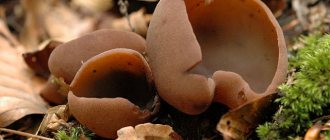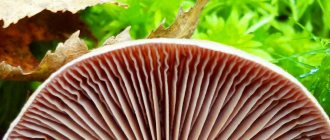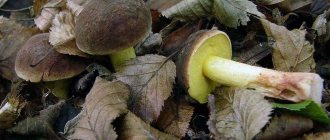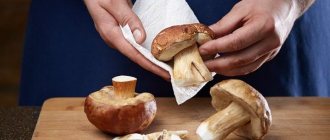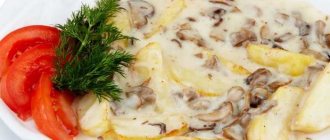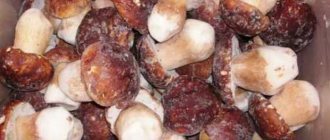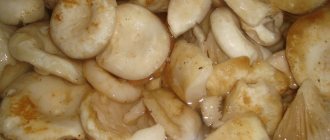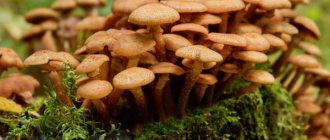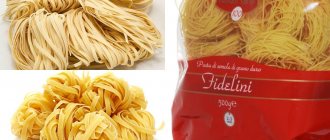Lamellar and tubular mushrooms can be found in any region of the country. These include all specimens that have a stem and a cap. Each species has both edible and poisonous representatives.
Beginning mushroom pickers often confuse representatives of tubular and lamellar mushrooms. Thus, a similar but poisonous lamellar mushroom may be mistaken for an edible tubular mushroom. It is important to know the characteristics of safe specimens and what species they belong to.
The main objective
Why do mushrooms grow on our planet? So that a person can find them and fry them with potatoes? Not at all. Fruiting bodies growing on the surface of the earth, on trees, or any other suitable substrate are the reproductive organs of the main, main part of the fungus - the internal underground mycelium, which, in the depths of the substrate, can cover an area of up to many hundreds of kilometers. The main purpose of terrestrial fruiting bodies is to grow and spray life-giving spores into the external environment, and thus ensure further proliferation of the mycelium. Therefore, for the mushrooms themselves, their most important part is the hymenophore, their spore-bearing layer.
There are six types of hymenophore structure, found in a wide variety of fungal species. Among the cap mushrooms most often collected and consumed by humans, the most common are those with the Tubular and Lamellar type of hymenophore.
Tubular and Lamellar Mushrooms – different in appearance, the same in essence
Reproduction
The functions of cap mushrooms are reduced to the reproduction of myceliums.
Small and light spores are formed in the tubes and plates of the lower layer of the cap. Each of them is a fungal cell.
They fall to the ground, are carried by the winds, enter the stomachs of animals without being digested, and are released along with the droppings. Thanks to this method of distribution, many mushrooms arise at great distances from the fruiting bodies.
Under favorable conditions, the spores germinate, gradually forming a mycelium.
After some time, new fruiting bodies begin to appear.
One cap mushroom can produce many millions of spores.
Lamellar Mushrooms
Lamellar Fungi are a group of basidiomyceous fungi with a lamellar hymenophore structure. “Basidial” is a division of the fungal kingdom that includes species that produce spores in special club-shaped structures called basidia. In the old days, all species with a similar hymenophore structure were classified as members of the agaricaceae family, but later mycologists scattered them into different orders and families.
Tubular and Lamellar Mushrooms – different in appearance, the same in essence
In most lamellar mushrooms, the fruiting bodies are annual and fleshy, and the hymenophore is located on the lower part of the cap and looks like many radial stripes - plates running from the center to the edges of the cap. They can look completely different - be very thin, loose and dense, or, on the contrary, hard and sparsely spaced, can be colored to match the rest of the fruiting body, or have a completely different color from it - there are a huge number of options in nature.
Tubular and Lamellar Mushrooms – different in appearance, the same in essence
The plates can be placed strictly under the surface of the cap or extend gently onto the stem; they often have bridges between them. The structure and color of the plates is often the most important factor in accurately determining the type of fungus.
The fruiting body of lamellar mushrooms is usually more fragile and brittle than that of tubular mushrooms, and the stem often has a cavity inside.
Some types of lamellar mushrooms have the property of releasing moisture from the surface of the hymenophore; also, in many species, in youth, the hymenophore plates are covered with a special protective membrane - a blanket, which breaks as the fruiting body matures, often leaving a characteristic film ring in the upper part of the stem.
Tubular and Lamellar Mushrooms – different in appearance, the same in essence
Pale grebe (Amanita phalloides)
It is classified as a group of deadly mushrooms. It is found in summer and autumn in forests in the south of the country. It is large in size, the diameter of the cap is 10-15 cm. The color is pale green with an olive tint. The edges of the toadstool cap have downward curved edges, like those of champignons. Later it is leveled.
Death cap
The leg is white and can reach a length of 12-15 cm. Below the cap there is a ring that resembles a skirt with frills; at the bottom of the leg there is a noticeable thickening.
Pale grebe has neither smell nor taste. This dangerous mushroom can be confused with russula and champignons. Even if a small amount is consumed, fatal poisoning can occur. Its danger also lies in the fact that symptoms of intoxication can manifest themselves 6 hours after consumption. Medical practice has also recorded cases where they appeared after 48 hours.
Examples of Lamellar Mushrooms
Russula Edible Russula Vesca
Tubular and Lamellar Mushrooms - different in appearance, the same in essence.
The famous Russian edible mushroom, very tasty and popular among lovers of quiet hunting. It grows from early summer to late autumn in deciduous and coniferous forests. It has a fleshy pinkish-brown cap, hemispherical in youth, and flat-convex in mature specimens.
The lamellar hymenophore of this species noticeably contrasts with the cap, is white in color, just like the leg, and becomes covered with rusty spots with age.
Common Chanterelle or Real Chanterelle, Cantharellus cibarius
Tubular and Lamellar Mushrooms are different in appearance, but essentially the same.
A species from the genus Chanterelle, the Chanterelle family. One of the favorite trophies of Russian mushroom pickers, with a rich and delicate taste.
It has a characteristic funnel-shaped fleshy cap of orange-yellow color, up to 10 cm in diameter and a dense, monochromatic and tapering stem fused with it. The flesh of the chanterelle is dense and elastic, the same orange color and with a pleasant fruity smell.
The hymenophore plates of the chanterelle are colored in the general tone of the fruiting body and extend far down the stalk.
The chanterelle grows from early summer until late autumn, in forests of all types, but especially loves mossy coniferous oak forests. In mid-summer, at the peak of the season, it can occur in huge numbers at the same time.
The most terrible and dangerous mushroom in the world also belongs to the lamellar type.
Pallid Grebe Amanita Phalloides
Tubular and Lamellar Mushrooms are different in appearance, but the same in essence.
Its lamellar hymenophore is distinguished by its stable white color with a slight greenish tint, which does not change as the fruiting body ages, which serves as one of the identifying signs of this deadly poisonous forest dweller.
Poisonous and inedible varieties
Inedible and poisonous tubular mushrooms include a small number of species, most of which are not eaten because of their unpleasant taste or smell. They are not fatally poisonous, but often cause gastrointestinal disorders or poisoning of varying degrees of intensity.
| Name | Latin | hat | Leg | Pulp |
| Wolf boletus | Boletus lupinus | Semicircular, convex or convex-prostrate, covered with skin with pink or red tints | Central, cylindrical, thickening in the middle part and narrowing at the base | Thick and dense, light yellow, very tender, turns blue when cut |
| False satanic mushroom | Boletus splendidus. | Convex or cushion-shaped, with velvety café-au-lait or brownish-pink skin | The base of the leg is reddish, turns blue when cut, cylindrical in shape with a narrowing | With a sour smell, very tender, has beige-yellow shades |
| Satanic pain | boletus satanas | Cushion-shaped, grayish-white or pale ocher-white with an olive tint, with a dry surface | Yellow in color with a characteristic red mesh pattern | Almost white in color, slightly blue when cut, has red tubes |
| Pepper mushroom | Chalciporus piperatus | Copper-red or dark rusty color, rounded-convex, with a dry velvety surface | Cylindrical, solid, with a narrowing at the bottom, the same color as the cap | Sulfur-yellow, reddening when cut, with a very pronounced peppery taste |
| Bile mushroom | Tylopilus felleus | Often convex in shape, with a smooth and dry surface, brownish or brownish in color | Bloated type, creamy-ocher color, with a dark brown mesh on the surface | Thick and soft, turns pink when cut, without aroma, with a very bitter taste |
Tubular Mushrooms
Tubular and Lamellar Mushrooms - different in appearance, united in essence
Tubular fungi - a group of basidiomyceous higher fungi with a tubular hymenophore structure. The tubular hymenophore consists of many microscopic tubes, is located on the underside of the cap and looks very similar to a sponge. The cap of tubular mushrooms can have a variety of shapes, but is never completely flat.
Tubular and Lamellar Mushrooms – different in appearance, the same in essence
Not easy at all
The science of mushrooms - mycology - is not the most precise of sciences. There are a huge number of very similar species and subspecies of mushrooms, and even scientists are not always able to accurately separate them from each other. Sometimes the difference between one species and another is determined only on the basis of characteristics that can be seen exclusively with an electron microscope. At the everyday level, everything is even more complicated - among the gifts of the forest there are many species - doubles, which may not be related at all, but be very similar to each other. Moreover, one of these doubles can be an excellent edible mushroom, and the second can be a deadly poison
This is why it is so important, when picking mushrooms, to always know the detailed external characteristics of specific species.
Examples of Tubular Mushrooms
This category includes many species from the Boletaceae and Maslenaceae families, including boletus, boletus, etc.
White mushroom, or Boletus Edulis
The same, most delicious and most important mushroom of the Russian forest. Belongs to the Borovik genus, Boletov family.
Tubular and Lamellar Mushrooms – different in appearance, the same in essence
Its cap is cushion-shaped, can reach a diameter of up to 25 cm and is painted in noble brown tones. The leg is thick and massive, with a downward expansion, up to 20 cm high and up to 5 cm thick. Borovik's pulp is dense, thick and white, with a characteristic pleasant nutty smell.
Borovik grows from the very beginning of summer until the end of autumn in forests of all types. Being very friendly, it forms mycorrhizae with many tree species. It bears fruit in peculiar “waves” – early June/break/mid-July/break – and so on. The number of fruiting bodies gradually increases with each new wave until autumn.
There is no need to specifically mention the taste and culinary advantages of Borovik - they are already known to everyone.
The tubular spore-bearing layer of Borovik can be dried and artificially planted in the soil litter under young birch, pine, oak and spruce trees, thus creating an artificial plantation of these mushrooms.
Speckled Oak Boletus Erythropus
Tubular and Lamellar Mushrooms - different in appearance, the same in essence.
A close relative of Boletus, similar to it in weight and size, and growing from May to October in mosses on marshy soils. It has good taste and culinary qualities, but in this case, it is interesting to us because its tubular hymenophore has a characteristic color - from yellow-olive in youth to brick-red in mature specimens. And when pressed, the tubes turn poisonous blue.
Common boletus Léccinum scábrum
Tubular and Lamellar Mushrooms - different in appearance, the same in essence
Another favorite and desired object of quiet hunting in Russian forests.
It has a convex cap, initially hemispherical, then cushion-shaped, up to 15 cm in diameter. Its color varies from light gray to dark brown, depending on growing conditions. The cap looks smooth, but in wet weather it becomes slightly slimy.
The leg is cylindrical and solid, slightly widening downward, up to 15 cm long and up to 3 cm in diameter. It has a whitish-gray color and is covered on top with a pattern of brownish scales.
The boletus pulp is white, very aromatic and tasty.
The tubular hymenophore under the cap, initially light, turns gray over time. Very easy to separate from the cap.
The boletus grows from early summer to mid-autumn in deciduous forests, reaching its peak form by mid-summer. It forms mycorrhiza not only with birch, but also with many other species of deciduous trees.
The tubular structure of the hymenophore is also characteristic of fungi - tinder fungi, growing on tree trunks in places where the bark is damaged. In tinder fungi, the tubes of the spore-bearing layer grow very tightly with the flesh of the cap, not being separated from it as easily as in representatives of the boletaceae and oiler families. This category includes representatives of the families:
- Fistulinaceae
- Polypore
- Hymenochaetes
- Ganoderma
- Some species of the Porieceae family.
Example view
Sulfur-yellow honey fungus (Hypholoma fasciculare)
At what temperature do mushrooms begin to grow? how mushrooms grow
Prefers to settle in large groups on rotting trunks of coniferous trees, on stumps, and near them. Grows in the forest during the summer-autumn season. The diameter of the cap is 2-7 cm. In young mushrooms it has a bell-shaped shape, and over time it straightens out. The color is yellowish or brownish-yellow, darker in the middle. The length of the leg is about 10 cm, thin, light yellow in color. The mushroom has light flesh with a bitter taste and a repulsive odor.
Sulphur-yellow false honey fungus
The sulfur-yellow false honey fungus differs from other mushrooms in the greenish color of the plates under the cap. Symptoms of intoxication become apparent 1-6 hours after consumption.
Collection rules
Collecting boletus mushrooms is accessible even to beginners - they are easy to spot and distinguish from inedible mushrooms. However, when going on a “silent hunt”, you need to repeat the rules for safe collection.
How to collect porcini mushrooms:
- Don't put a mushroom in your cart unless you are 100% sure you can identify it. It is better to give up production than to take risks.
- Do not pick mushrooms growing along roads and railways. Their flesh, like a sponge, absorbs toxins and poisons. Also, do not look for mushrooms in industrial areas and cemeteries.
- Carefully cut the mushrooms, do not pull them out. This will preserve the mycelium.
- The mycelium is often located along natural folds of the relief. We are talking about ditches and ravines, this is where you look for groups of boletus mushrooms.
- Leave mushrooms eaten by worms in the forest. Pin them onto a knot, with the cap down. This will promote the spread of spores and the formation of new myceliums. In addition, dried mushrooms will serve as food for birds and squirrels in the winter.
How to grow?
If you can find porcini mushroom mycelium for sale, you can grow it at home or in your garden. Alternatively, you can try to find old mushrooms that are practically crumbling; they can also become the basis for planting.
In the apartment
When sorting the harvested mushrooms, it is necessary to select those that are unsuitable for cooking, but are quite suitable for planting. You can immediately discard the stem, since only the cap contains the spores necessary for planting.
In addition to choosing the container in which the mushrooms will grow and the soil, you need to perform a number of actions:
- Soak the collected caps. For 2-3 large mushrooms you will need 50 grams of live yeast and 4 liters of water. You should not use whole caps; they need to be crumbled or cut. The prepared mass is stored in a dark place for 2 days.
- When time passes, you need to take 200 ml of the fermented mass and mix it with 2 liters of water.
- Next, the mixture is poured into the soil - and all that remains is to wait.
In order for mushrooms to germinate, they should be planted in pots with other indoor plants, then the chances of a good harvest increase several times.
On a personal plot
The principle of growing porcini mushrooms in a personal plot is the same. It is necessary to find suitable material for planting and a place for planting. However, if replanting with plants is required at home, then trees on the site are quite suitable, near which porcini mushrooms should be planted.
Undoubtedly, weather plays a big role for outdoor mushrooms. Planting is carried out in April so that by June the harvest can already be harvested. For normal growth, mushrooms always need moderately moist soil and shaded areas.
The porcini mushroom is considered the king of the mushroom kingdom, and its taste, appearance, and composition prove this. White is included in the 1st (highest) category of mushrooms, which is especially valued in cooking. The maximum amount of useful substances and the minimum number of contraindications makes this product unique. And the variety of processing methods allows you to make many delicious dishes based on porcini mushrooms.
Cooking methods
Porcini mushrooms are considered a universal product that can be fried, boiled, stewed and combined with many vegetables, as well as meat and fish. Each heat treatment has its own nuances and subtleties that you should be aware of.
How to fry in a frying pan?
Cooking porcini mushrooms is not always necessary; for example, you can do without it before frying. The preparatory steps are the same: selection, cleaning, washing and slicing.
Place the prepared mushrooms in a hot frying pan with vegetable oil. They should be kept over high heat until all the liquid from the mushrooms has evaporated. When this happens, other vegetables are added to the pan, such as onions, carrots and spices. You can also pour sour cream or sour cream over everything - you get a delicate and pleasant taste.
If mushrooms are fried with potatoes, they should be cooked in different containers. This is necessary due to the fact that root vegetables and mushrooms have different temperatures and cooking times.
How to put it out?
Raw and frozen mushrooms are suitable for stewing. If freshly harvested ones are used, then cooking is done in two containers: onions are stewed in one, and mushrooms in the other. And only when both ingredients are ready, they are combined and other components of the dish are added.
When using frozen porcini mushrooms, first add onions and other ingredients to the frying pan and lightly simmer. After that, mushrooms are added to them and stewed under a closed lid for 30 minutes.
How to cook in a slow cooker?
Cooking porcini mushrooms in a slow cooker saves a lot of time. Vegetables can be used as additional ingredients. The cooking process and speed largely depend on the functionality of the device.
As a rule, porcini mushrooms are prepared in a multicooker in two stages: first, they are boiled in the “Cooking” mode, and then cooked in the “Frying” mode.
How to bake in the oven?
Baked porcini mushrooms are delicious served with pork and potatoes. But, before you send the ingredients to the oven, do not forget about the preparatory stage. The mushrooms should be sorted, peeled and, if desired, boiled for 20 minutes. The last step can be omitted if the porcini mushrooms are in excellent condition.
The ingredients should be laid out in layers on a large baking sheet: first the meat, then the onions and potatoes, and then the mushrooms. You need to alternate layers until you run out of food, then sprinkle everything on top with cheese and put it in the oven. Bake until done, which is about 40 minutes, after which the dish can be served.
Instead of pork, you can use chicken or turkey to make the dish lower in calories. You can also simply bake porcini mushrooms with turnips, carrots and onions - it will also turn out very tasty.
Beneficial features
Nutritious boletus mushrooms in dried form are close in calorie content to bread and are significantly superior to many vegetables. But unlike carbohydrate or fatty, energy-rich foods, their calorie content is determined by the presence of proteins, which are a building block of the body and must be present in the diet.
The protein composition is characterized by the presence of essential amino acids - leucine, tyrosine, arginine and glutamine, which are in an easily accessible form and are quickly absorbed.
The pulp is rich in vitamins; thiamine, nicotinic and ascorbic acids, vitamins E and D are significantly present in it. A whole complex of essential microelements - calcium and phosphorus, sodium and potassium, manganese and iron complement this wonderful natural store of valuable substances.
The fibers contained in mushroom tissues stimulate intestinal function and have a beneficial effect on digestive processes. Preparations from dried mushrooms have long been used in folk medicine for urolithiasis and inflammatory diseases of the excretory system.
These mushrooms are known to act as antioxidants, which reduce the number of free radicals and thus reduce the risk of cancer, slow down the aging process, and strengthen the immune system.
How to prepare for the winter?
Porcini mushrooms cannot be stored fresh for too long, but you can prepare them for future use for the winter. Marinated and salted mushrooms are not only very tasty, but also healthy, because even after heat treatment, most of the beneficial substances are retained in them.
Fried mushrooms in jars
Fried mushrooms in a jar turn out piquant and tasty, and it doesn’t take much time to prepare them. You should first decide whether the mushrooms will be boiled before frying. It is impossible to say that this is necessary for whites, but some people like this method of cooking.
Large mushrooms can also be used for this preparation. They just need to be chopped.
The cooking itself consists of the following steps:
- Selected porcini mushrooms should be placed in a saucepan and boiled for 15 minutes. After that, they are thrown into a colander and washed.
- The next stage is frying. Place the mushrooms in a frying pan without oil and give a little time for the juice to evaporate. After this, add vegetable oil and fry the mushrooms until tender. If desired, you can add onions.
- At the very end, you can salt the dish and add your favorite spices.
While the main ingredient is being fried in a frying pan, the jars should be sterilized. Then you need to place already fried mushrooms in them, but you cannot fill them to the top, as you need to leave room for oil. You can pour the one on which the mushrooms were fried.
If there is not enough oil, then you need to pour more oil into the pan, heat it up and only then add it to the jars. Do not use cold oil, as this may cause the jars to swell.
Next, the containers with mushrooms are rolled up and sent to a warm place so that they gradually cool down. When they reach the optimal temperature, they can be placed in the refrigerator or down into the basement.
How to marinate?
Marinated porcini mushrooms are an excellent appetizer for any feast. Before you begin the main stages of cooking, you need to sort the mushrooms. This must be done carefully, since other species cannot be allowed to enter. You should also thoroughly clean the mushrooms from soil and debris. You should not remove the top film from the cap, as it does not pose any danger, but will only give the finished dish an appetizing color.
The processed mushrooms are placed in a saucepan with water and placed on fire. When they boil, they should be boiled for 20 minutes. All this time, foam will form, which must be removed. At the very end of cooking, citric acid is added, and then the mushrooms are placed in a colander.
While the liquid is draining, you should make the marinade. To do this, you need to fill a pan with water (1.2 liters). Add spices there too. As a rule, these are black peppercorns (5-6 pcs.), allspice (2-3 pcs.), 1.5 tablespoons of table salt, bay leaf and cloves 2 pcs. You should also add 9% vinegar, which will require 60 ml. The indicated amount of ingredients is taken per 1 kilogram of mushrooms. The marinade is prepared for 30 minutes, after which the mushrooms should be placed in sterilized jars, filled and rolled up.
After capping, all jars should be turned upside down, after which they are placed on the floor, wrapped in warm blankets and left to cool.
How to pickle?
Salted mushrooms are good because they can be eaten within 1-2 weeks after cooking. There are two methods of pickling - hot and cold. The difference between them is that with the first, the mushrooms are pre-cooked, and for the second, this procedure is not needed.
Hot method
The initial stage is preparation. Mushrooms are sorted, cleaned and cut. For hot salting you will need black peppercorns (3-5 pcs.), coriander (to taste), bay leaf (2-3 pcs.), cloves (3-4 buds), salt (1.5 tbsp.) . This amount of ingredients is calculated for 1 kilogram of mushrooms.
First, the main ingredient should be boiled in lightly salted water. After waiting for it to boil, you should boil the mushrooms for another 20 minutes, periodically removing the foam. When time passes, add all the specified spices to the mushrooms and cook for another 15 minutes. Next, the contents of the pan must be placed in sterile jars and filled with brine on top.
There is no need to roll up the containers; nylon lids are enough. Mushrooms should be stored in a place where the temperature will not exceed +8 degrees. It will take two weeks for them to soak in the brine, after which they can be eaten.
Cold way
Salting porcini mushrooms using the cold method is considered faster. Any utensil is not suitable for preparing this method; you will need a special container. Ideally, these are small barrels or tubs, which should be doused with boiling water before use. If there are no such containers, then you can use buckets or enamel bowls.
The mushrooms themselves should be carefully processed and sorted. You also need to prepare spices that will provide the dish with a wonderful taste. For cold pickling, you can use the same ingredients as for hot pickling. The only thing you will need is garlic and currant leaves.
After cleaning, the mushrooms should be filled with water for 4 hours, after which the liquid is drained - and the mushrooms can be laid out for pickling. First, you should lay out a layer of spices, then mushrooms (their layer should be 5-10 centimeters), then again spices - and so on until the ingredients run out.
The top layer should be salt and seasonings.
A press is installed on top, and the container is placed in a cool place. Within two days, juice will begin to release, and the mushrooms will begin to fall down. The brine will increase every day and should be drained, as it should only slightly cover the mushrooms. Monitoring this is extremely important and must be monitored every day. After 30-40 days, the mushrooms will be edible. You can try the mushrooms earlier, but perhaps their taste will not be as rich.
How to freeze correctly?
Freezing allows you to extend the shelf life of porcini mushrooms by 6 months. You can harvest raw mushrooms, or you can boil them. In any case, the main thing is to thoroughly process the mushrooms. They should be washed, cleaned of debris and pests and cut, if necessary. Porcini mushrooms should be placed in sealed containers or bags and placed in the freezer.
How to dry it?
Dried porcini mushrooms are most often used for preparing first courses, as they add not only a piquant taste, but also a unique aroma.
There are several options for preparing porcini mushrooms in this way:
- in the oven;
- in the dryer;
- on open air;
- in the microwave.
However, the drying process itself does not have any special nuances, but proper preparation is important. There are no toxic substances in porcini mushrooms, so there is no need to soak them. Moreover, before drying, you shouldn’t wet them again, as they will lose their shape. If the mushrooms are too dirty, they can be lightly washed under running water, but after that be sure to blot them with a towel to avoid the accumulation of excess liquid in the pulp.
Of all the drying methods listed above, open air is considered the most correct. To do this, the mushrooms are cut into slices and strung on a fishing line, after which they are covered with gauze and hung in the shade. You can determine the readiness of mushrooms by their texture: if you take them in your hands, they can bend, but they should not break.
If oven drying is chosen, it should be carried out for several days, and the temperature in the device should always be no higher than 75 degrees.
